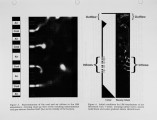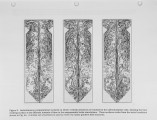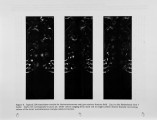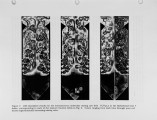| OCR Text |
Show performance at 90 M W improved to within acceptable limits when part of the gas was injected at 722-ft. At 90 MW, an average NOx emission rate of 0.256 lb/MMBtu was achieved with 7 % gas heat input. At 65 M W there was little effect of the additional 722-ft injectors. NOx emissions reached the 0.25 lb/MMBtu target with 210 ppm CO. 6. CONCLUSIONS The FLGR system developed for Riverbend Unit 7 led to significant reductions in NOx emissions at full and partial boiler loads while having negligible impact on steam temperatures and slagging. This unit represents the first application of FLGR technology to a tangentially-fired utility boiler. Results obtained indicate that the unique characteristics of this class of boilers, when outfitted with low NOx burners using close-coupled overfire air, require special design considerations to avoid adverse interaction between the injected natural gas and the coal-rich core of the furnace, which can lead to elevated CO emissions. Modifications to the original gas injection system to reduce such interaction led to large improvements in the CO emissions performance of FLGR on this unit. However the original performance targets of achieving 0.25 lb/MMBtu NOx emissions and CO emissions less than 200 ppm at all boiler loads have not yet been met. At full load and with 7 % natural gas heat input, the process achieved a maximum NOx reduction of 3 4 % from the baseline level of approximately 0.42 lb/MMBtu. However CO emissions were still above the 200 ppm target level. NOx reductions as high as 4 2 % were measured at partial load using 7 % gas heat input, but C O emissions were higher than the target for the technology. The origin of the elevated CO emissions on the tangentially-fired boiler, relative to past field experience in applying FLGR technology to roof-fired and cyclone-fired boiler designs, are believed to be understood. These are due to interactions between the injected natural gas and the coal burnout process, which lead to C O emissions from coal rather than from incompletely reacted natural gas. The coal burnout process was not addressed by the modeling, however aspects of the FLGR system performance determined by the gas chemistry were well predicted by the modeling. These include the prediction that the 714-ft elevation was the best location at which to introduce most of the reburn gas, as well as the gas injector layout at this elevation. The modeling also correctly predicted the slight increase in % NOx reduction with increasing injection elevation, and the sharp rise in C O emissions when gas is introduced at higher elevations. The simulations also correctly predicted that the % NOx reduction would increase slightly with decreasing boiler load, and that 00 emissions decrease as boiler load is decreased. Additional collaborative modeling using ESA's three-dimensional time-averaged modeling and N G B Technologies' advanced LIM-based simulations is planned to develop further improvements to the FLGR system design in order to meet the original performance targets. The results will also be useful for a broader understanding of the FLGR process and for developing FLGR systems for other tangentially-fired coal-burning utility boilers. |




























